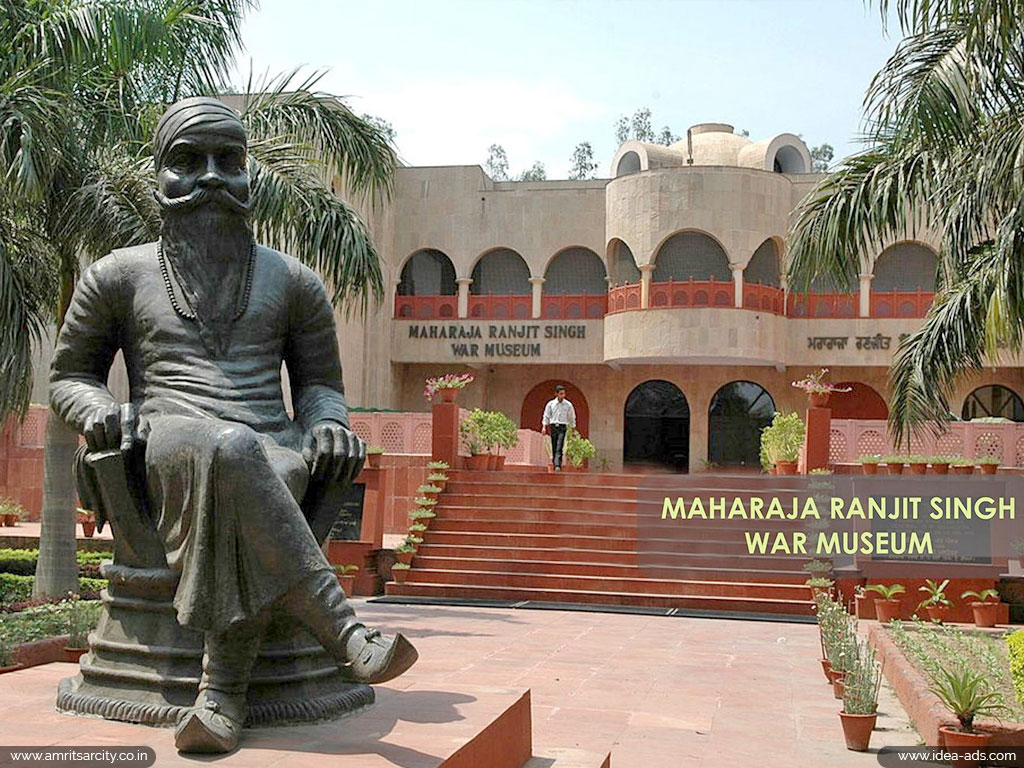
Maharaja Ranjit Singh Museum, Amritsar
Maharaja Ranjit Singh Museum in the Company Bagh is a treasure house of the history, art and architecture of the Sikhs of the 18th and the 19th century. Formerly the summer residence of Maharaja Ranjit Singh, a famous Sikh king of the 19th century the palace now has been converted into the museum. Maharaja Ranjit Singh as his summer resi-dence built it in 1818 and he stayed here till 1837. The building was in Arabic style. Dr. Hidayat Ullah, Vice-presi-dent of India, inaugurated the museum in 1977. Efforts have been made to collect all the relevant material from the 18th and 19th centuries to provide visitors and scholars with glimpses of the cultural history of this period. The main collections can be broadly classified as under: Paintings, Arms and Armours, Manuscripts & Coins.
Anglo-Sikh War Memorial, Ferozepur
Anglo-Sikh War Memorial contains portraits of historical personalities, paintings, depicting scenes of battles of the Anglo-Sikh Wars. Poetic couplets of the contemporary poet Shah Muhammad are also embossed on the walls of the memorial, which describe the detail of the battles in Punjabi language. It was set-up here in 1976 A.D. Portraits of historical personalities and battle scenes painted by Jaswant Singh and Kirpal Singh and are exhibited. Weapons used in the Anglo-Sikh War are also conserved in the memorial.

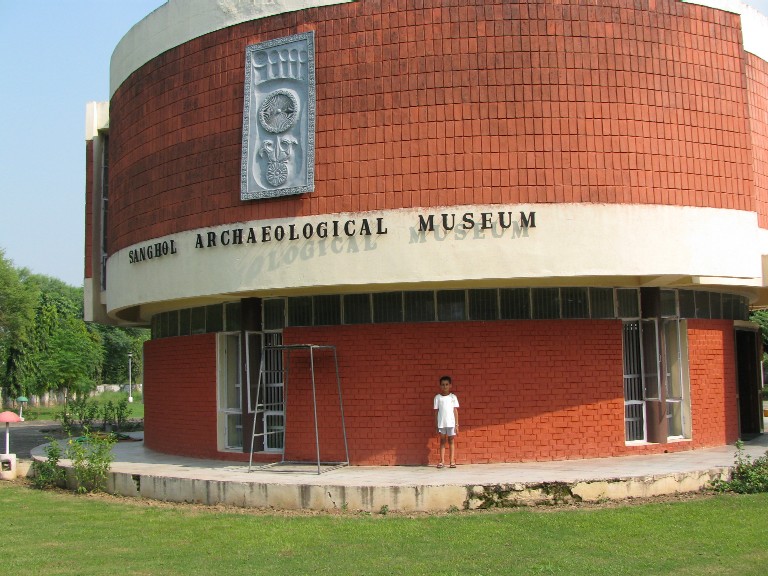
Sanghol Museum
Fatehgarh Sahib, epository of archaeological finds of Punjab’s ancient civilisation. 40 Km from Chandigarh on Chandigarh-Ludhiana road. One of the most important monument here is a Stupa with Budhist Monastry dating back to Ist -2nd century.
Government Museum Hoshiarpur
Hoshiarpur contains fossils and rare sculptures collected from the archaeological site of Dholbaha, dating back to the Stone Age. The rare relics collected here are of an astonishing variety. They are also in good shape. At this museum fossils and rare sculptures collected from the archaeological site of Dholbaha are on display. The rare relics displayed here dates back to the Stone Age are of an astonishing variety & in good shape.

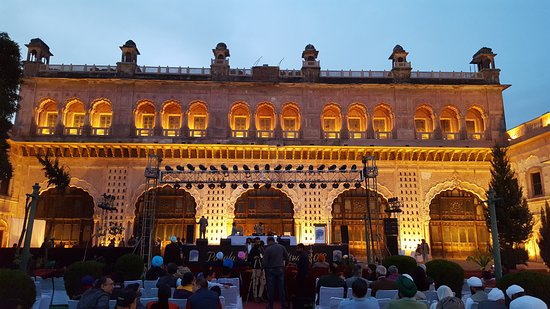
Qila Mubarak Patiala, Museum of Armoury & Chaneliers
The Darbar Hall contains rare cannons, swords, shields and maces, daggers of Guru Gobind Singh Ji, sword of Nadar Shah etc. and rich collection of Chandeliers from Europe- one of the best collections in the world.
Sports Museum, National Institute of Sports, Patiala
Only one of its kind exhibition centre, this museum contains rare photographs, medals and kits of the great Indian sportsmen. It is set in the sylvan surroundings of Moti Bagh Palace.

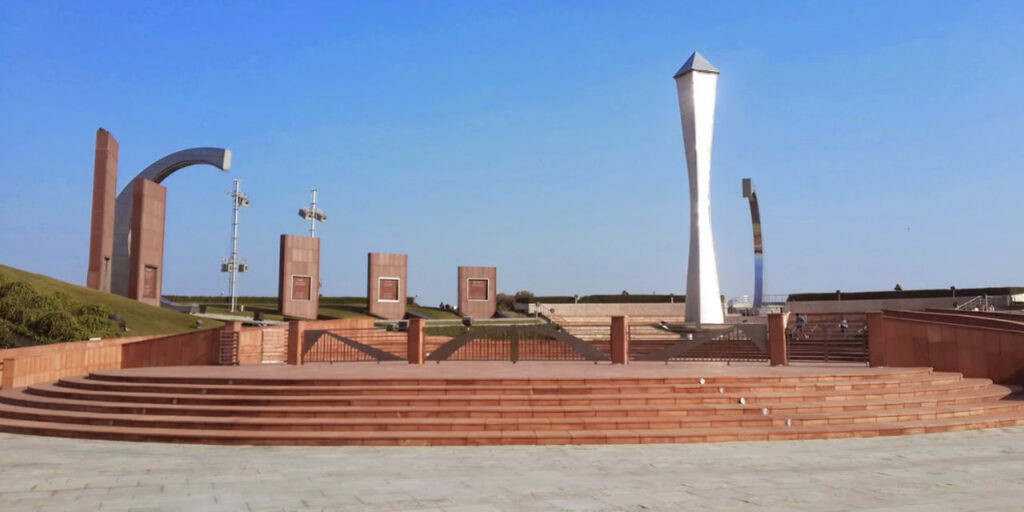
Guru Teg Bahadur Museum
Anandpur Sahib, Ropar, depicts the saga of Sikh history. Leading contemporary artist of Punjab has done its paintings.
Art Gallery at Sheesh Mahal
Patiala, contains a rare set of miniature paintings and paintings in Kangra, Rajasthan and Patiala styles, special section on Tibetan Arts and Artifacts etc. and its Medal Gallery contains the world’s major group of Medals and decorations.
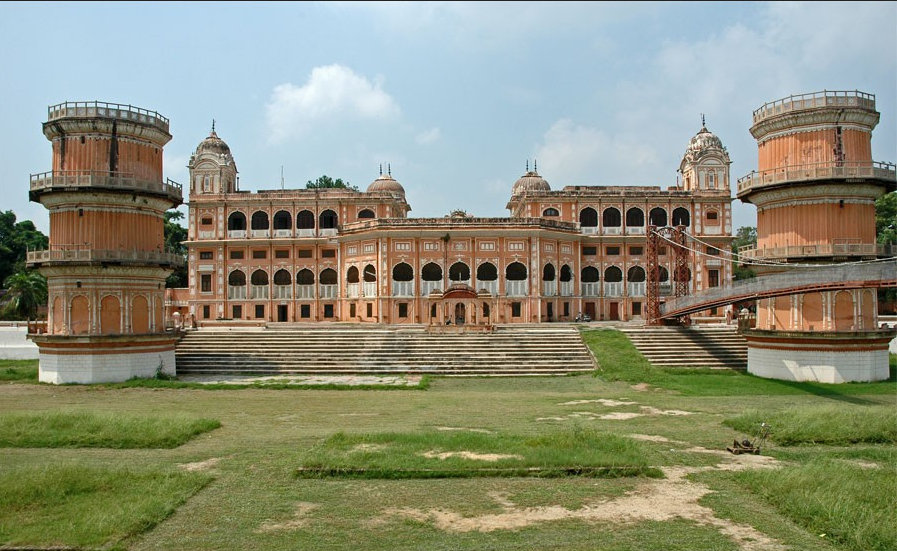
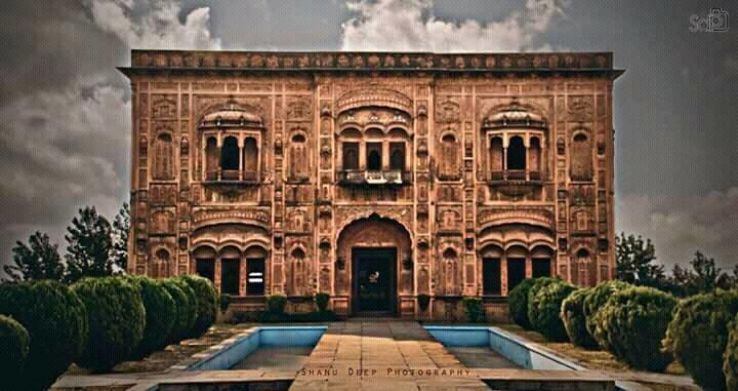
The next section contains musical instruments like Dholak (the drum), and other string instruments like Sitar, Sarangi, Tumba and Algoza. The next compartment has a cradle for the baby, a large cot, a walker and other toys. Items that were given in the dowry, the vanity boxes, and the mustard oil lamp are all there. There is a dummy of a housewife churning milk. Then there is a well with all necessary equipment for drawing water. Next lies a small closet with items involved in religious ceremonies.
After passing through another room containing decorations and harnesses, saddles and Jhuls for cattle, horses and camels, we come to a section that contains traditional agricultural implements.
The balcony built primarily for display of Phulkaris looks fabulous. There are dummies of 7-8 housewives embroiding the phulkari. There is another dummy of a bride sitting in a Dola just about to leave her parents home. Representation of Bhangra Dance of Punjab is done through toys. The typical dress of a Punjabi lad and lass are on display. The jewelry and the Punjabi Jutis (foot-wears) are also displayed in showcases.
Rural Museum, Punjab Agricultural University
The Museum of Rural life of Punjab in the campus of the Punjab Agricultural University is one of the must-sees for any tourist of Punjab. This museum displays the Punjabi Culture to its best. The PAU is perhaps, the only university in India to have a museum like this.The museum assumes much importance since the rural Punjab is changing fast. The old traditions and customs, which were rampant till the last decade, are now losing their stand with the intervention of the technology. Women fetching water in gaggars (the bronze pot) from the village well are no more seen.Old bronze utensils are now antique pieces. Spinning is no more done. Women do not embroider phulkari.
The whole credit for building up this museum goes to Dr. M.S. Randhawa, the first Vice Chancellor of this University. It was he who conceived the idea and initiated the project. He decided suitable design for the building and collected the old objects from small ancient villages and towns like Sultanpur Lodhi, Rahon, Goindwal, Zira and Sunam.
The museum is located at the back of College of Home Science of this University. The charges are minimal at Rs. 2/-. The museum is open on all working days of the university from 9 a.m. to 1.00 p.m. and 2 p.m. to 5 p.m.
Interiorly the museum is divided into various sections. The very first room contains a collection of Harappan pottery and coins. Next is an open kitchen, which includes all the necessary kitchen equipment like a big paraat, an old type of Chulha (the hearth), a peerhi etc. Besides there are two dummies of housewives – one carrying a gaggar (the bronze pot) on her head and another rolling the chappatis. In a room on the left are placed old bronze utensils for cooking, eating, drinking and milking the cattle.The next room has other household equipments like grain storage bins, spinning wheel, other equipment for ginning, spinning, weaving etc. Besides this, there are pictures of village artisans by the artist Kehar Singh. A dummy of a lady making trouser string lies in the centre of this room.
Others depict themes from mythology, legends, Raga Ragnis, Nayak-Nayika and Baramasa. The placement of concave and coloured mirrors in the prayer room creates a remarkable effect on the mind when luminosity is put there. The floral designs on the walls are reminiscent of Emperor Jahangir’s time. The paintings in two of its well maintained , mirror-worked chambers are of Kangra and Rajasthani qalam, depicting the poetic visions of Keshav, Surdas and Bihari. The Sheesh Mahal now houses a museum, an art gallery, the famed medal gallery and also the North Zone Cultural Centre.
